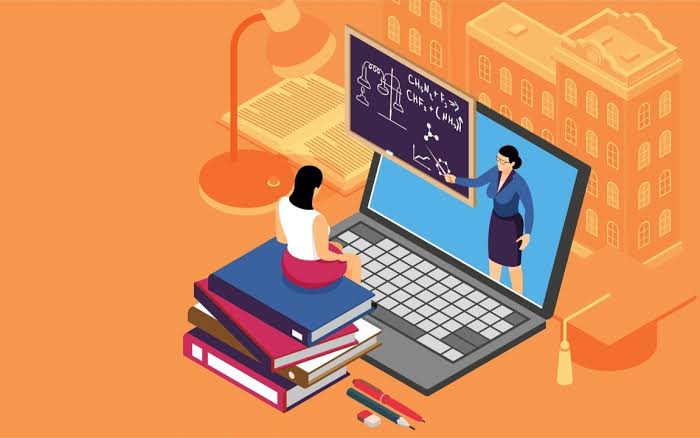In the ever-evolving landscape of global education, online learning platforms have become a defining feature of modern instruction. By July 2025, these digital ecosystems have not only revolutionized how knowledge is delivered but also reshaped who has access to it, how fast it can be learned, and what skills are in demand. From preschool to postgraduate programs and corporate training to self-paced skill development, online learning has become a transformative force in education.
Expanding Access to Quality Education
One of the most profound impacts of online learning platforms is their ability to make education more accessible. Students from remote or underserved regions now have access to high-quality resources and instructors that would otherwise be out of reach. This democratization of knowledge has helped level the playing field for millions of learners globally.
Platforms like Coursera, edX, Khan Academy, and local initiatives in countries like Nigeria, India, and Brazil have allowed students to attend classes taught by professors from top universities without leaving their homes. As of 2025, many governments and NGOs continue to invest in these platforms as a tool for bridging the education equity gap.
Flexibility and Personalized Learning
Traditional classroom settings follow rigid schedules and often cater to a one-size-fits-all approach. Online platforms, by contrast, offer flexibility that is particularly beneficial for working adults, parents, and students with disabilities. Learners can choose when and how they study, adjusting their schedules to meet personal and professional demands.
Furthermore, many online learning environments incorporate adaptive technologies that personalize the learning experience. Algorithms analyze student progress and tailor content to focus on areas where improvement is needed. This results in more efficient and effective learning paths, allowing students to master subjects at their own pace.
Diverse Course Offerings and Lifelong Learning
Online platforms are not limited to academic subjects; they offer a vast array of courses across disciplines—ranging from data science and digital marketing to creative writing and wellness. This diversity caters to various interests, career goals, and life stages, making lifelong learning more achievable than ever.
The rise of micro-credentials and certificate programs has further contributed to this trend. Learners can now build specialized skills in shorter periods, often with industry-recognized certifications that improve employability. As industries evolve rapidly, professionals are turning to these platforms to reskill and remain relevant in the job market.
Enhancing Digital Literacy and Technical Skills
Engaging with online learning platforms naturally enhances digital literacy. Students must navigate virtual classrooms, use productivity tools, submit assignments online, and sometimes collaborate with peers across borders. These experiences help develop essential 21st-century skills, such as communication, time management, and digital fluency.
Moreover, because many online courses are focused on emerging technologies—like AI, machine learning, blockchain, and cybersecurity—students are better prepared for tech-driven career paths. In 2025, many employers now expect some level of online learning engagement as a sign of initiative and adaptability.
Promoting Independent and Active Learning
Online learning requires a greater level of self-discipline and initiative than traditional education. Without the constant presence of a teacher, students are encouraged to take ownership of their learning journey. This fosters a stronger sense of responsibility, goal-setting, and critical thinking.
Interactive features such as quizzes, discussion forums, peer reviews, and project-based tasks further support active learning. These platforms are increasingly using gamification elements—badges, leaderboards, and progress tracking—to keep learners motivated and engaged throughout their studies.
Supporting Teachers and Institutions
While much of the attention is on student benefits, educators have also greatly benefited from online platforms. Teachers can reach a broader audience, access a global library of teaching materials, and utilize powerful tools to track student performance and engagement. Many platforms now offer automated grading systems, plagiarism detection, and analytics dashboards, which streamline administrative tasks and help educators focus more on instruction and mentoring.
Educational institutions have also embraced hybrid models, blending online resources with face-to-face teaching. This approach enhances curriculum delivery and increases the institution’s capacity to serve more students, even across geographical boundaries.
Addressing Learning Disruptions
The COVID-19 pandemic was a catalyst that accelerated the adoption of online learning worldwide. Even though many schools have returned to physical classrooms, online platforms continue to play a key role in ensuring learning continuity during disruptions—be it public health crises, natural disasters, or political instability.
As of 2025, many schools and universities have maintained robust digital infrastructures that allow for seamless transitions between online and in-person modes. This readiness is crucial in building more resilient education systems capable of adapting to future challenges.
Challenges and Considerations
Despite the numerous benefits, online learning platforms are not without their challenges. Issues such as lack of internet access, digital device shortages, and inadequate digital literacy remain significant barriers in some regions. There’s also concern about screen fatigue, isolation, and the quality of some unregulated courses.
To address these challenges, governments and private sectors are investing in infrastructure development, teacher training, and digital inclusion initiatives. Ensuring accessibility for people with disabilities and supporting mental health in online learning environments are also gaining more attention.
Shaping the Future of Education
Online learning platforms are not replacing traditional education—they are complementing and enhancing it. In the coming years, we can expect a more blended, tech-integrated model of learning where physical and digital experiences work together. Virtual reality (VR), augmented reality (AR), and artificial intelligence (AI) are already being embedded into learning platforms to create immersive, personalized, and adaptive environments.
The future of education is global, digital, and dynamic. Students in 2025 are no longer confined to local curricula or standard timelines—they are shaping their own educational journeys in ways that were unimaginable just a decade ago.
Conclusion
Online learning platforms have redefined what it means to be a student in the 21st century. They offer accessibility, flexibility, and personalized experiences that cater to a diverse global audience. By empowering learners, supporting educators, and enabling institutions to innovate, these platforms are at the forefront of an educational revolution.
As we move forward, the integration of advanced technology with sound pedagogical principles will continue to elevate the role of online learning in shaping more inclusive, equitable, and forward-looking educational systems around the world.




Skills